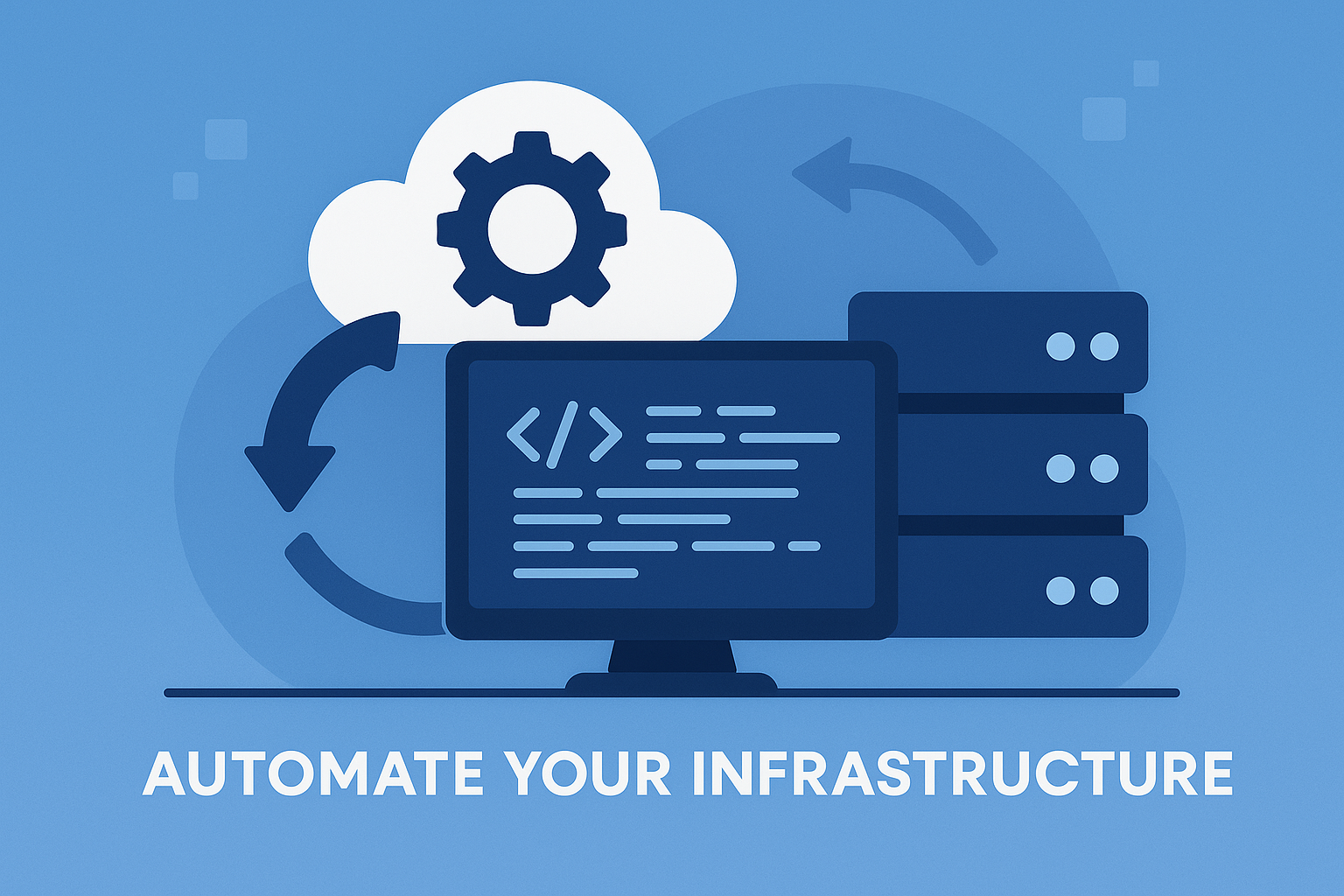In today’s rapidly evolving digital landscape, businesses are increasingly turning to cloud agnostic infrastructure solutions to optimize cost effectiveness and flexibility. Many businesses do not want to be tied to one cloud provider, and so a cloud agnostic approach gives them the ability to have their prod environment one one provider and their backup environment with another. Some businesses will even use a multi-cloud approach for their prod environment. In particular, the implementation of Kubernetes has emerged as a powerful tool for building and managing these infrastructures. By leveraging Kubernetes, organizations gain the ability to seamlessly deploy and scale applications across different cloud providers, reducing vendor lock-in and maximizing cost savings. At SlickFinch, we understand the intricacies of building a cost-effective cloud agnostic infrastructure with Kubernetes. Our team of experts is well-versed in the latest industry trends and solutions, and we are ready to assist you in harnessing the full potential of Kubernetes for your organization’s success. Contact us today to learn how we can help you navigate the complexities of building a cost-effective cloud agnostic infrastructure.

Understanding Cloud Agnostic Infrastructure with Kubernetes
Cloud agnostic infrastructure refers to an architecture that is not tied to any specific cloud provider or platform. It allows organizations to deploy their applications and services across multiple clouds, giving them the flexibility to choose the best cloud provider for each specific use case. Kubernetes, an open-source container orchestration platform, plays a crucial role in enabling cloud agnostic infrastructure.
What is Cloud Agnostic Infrastructure?
Cloud agnostic infrastructure, also known as cloud neutrality, is an approach where applications and services are designed and developed to be independent of any specific cloud provider. This means that the infrastructure can be deployed and run on any cloud platform, whether it be public, private, or hybrid.
By adopting a cloud agnostic approach, organizations can avoid vendor lock-in and take advantage of the best features and capabilities offered by various cloud providers. They can also distribute their workloads across multiple clouds, ensuring high availability and resilience.
The Role of Kubernetes in Cloud Agnostic Infrastructure
Kubernetes acts as a key enabler for cloud agnostic infrastructure. It provides a platform for deploying, scaling, and managing containerized applications across different cloud environments. With Kubernetes, organizations can abstract away the underlying infrastructure and focus on running their applications efficiently.
Kubernetes allows organizations to define their infrastructure as code (IaC) using declarative configurations. This means that the infrastructure can be defined and managed through code, making it highly scalable, flexible, and version-controlled. Kubernetes also offers a wide range of features for load balancing, networking, storage, and security, making it an ideal choice for building cloud agnostic infrastructure.
The Benefits of Cloud Agnostic Infrastructure with Kubernetes
There are several benefits to adopting a cloud agnostic infrastructure approach with Kubernetes:
-
Flexibility: By decoupling applications from specific cloud providers, organizations have the freedom to choose the cloud platform that best meets their needs for each specific use case. They can leverage the unique features, services, and pricing models offered by different cloud providers.
-
Vendor Independence and Avoiding Lock-In: Cloud agnostic infrastructure allows organizations to avoid being tied to a specific cloud vendor. This gives them the flexibility to switch cloud providers or distribute workloads across multiple clouds, reducing dependency and mitigating the risks of vendor lock-in.
-
Optimized Resource Utilization: Kubernetes enables organizations to efficiently utilize their cloud resources by dynamically scaling applications based on demand. It automates the efficient allocation of resources, resulting in cost savings and optimized performance.
-
High Availability and Resilience: With cloud agnostic infrastructure, organizations can distribute their applications across multiple clouds, ensuring high availability and resilience. Kubernetes provides robust mechanisms for managing and orchestrating containers, making it easier to achieve fault tolerance and recoverability.
-
Simplified Operations and Management: By leveraging Kubernetes, organizations can streamline their operations and management processes. Kubernetes provides a unified platform for deploying, scaling, and monitoring applications, simplifying the overall management of a cloud agnostic infrastructure.
Building a Cost Effective Cloud Agnostic Infrastructure
Building a cost-effective cloud agnostic infrastructure requires careful planning, optimization, and implementation strategies. Here are some key considerations:
Choosing the Right Cloud Providers
When building a cloud agnostic infrastructure, it is important to carefully evaluate and choose the right cloud providers. Consider factors such as pricing models, service offerings, geographical coverage, and compliance requirements. It is also essential to ensure that the cloud providers have strong support for Kubernetes and can seamlessly integrate with the infrastructure.
Optimizing Resource Allocation and Scaling
Efficient resource allocation and scaling play a vital role in cost optimization. By leveraging Kubernetes’ autoscaling capabilities, organizations can scale their applications based on demand, ensuring that resources are allocated efficiently. Implementing dynamic resource allocation strategies, such as horizontal pod autoscaling, can help optimize costs by allowing applications to scale up and down automatically.
Implementing Cost Management Strategies
To ensure cost-effectiveness, it is important to implement cost management strategies. This can include optimizing instance types, right-sizing resources, leveraging spot instances, and implementing cost allocation and tracking mechanisms. Organizations can also consider using cloud cost management tools or services that provide insights into resource usage and help identify cost-saving opportunities.
By carefully considering these factors and implementing cost optimization strategies, organizations can build a cost-effective cloud agnostic infrastructure.
Leveraging Kubernetes for Cost Efficiency
Kubernetes provides various features and tools that can help organizations achieve cost efficiency in their cloud agnostic infrastructure. Here are some ways to leverage Kubernetes for cost efficiency:
Utilizing Kubernetes Cluster Autoscaling
Kubernetes cluster autoscaling allows organizations to automatically scale the cluster nodes up or down based on resource requirements. By leveraging cluster autoscaling, organizations can optimize costs by ensuring that the cluster’s capacity aligns with the actual workload. This avoids overprovisioning and ensures that resources are utilized efficiently.
Implementing Application Autoscaling
In addition to cluster autoscaling, Kubernetes also supports application-level autoscaling. Organizations can define autoscaling rules based on metrics such as CPU utilization or request latency. This allows applications to scale horizontally, adding or removing instances based on demand. By implementing efficient application autoscaling, organizations can optimize resource utilization and reduce costs.
Using Kubernetes Cost Control Tools
Kubernetes provides various cost control tools and features that can help organizations monitor and manage costs effectively. For example, Kubernetes enables resource quota management, which allows organizations to limit the amount of resources consumed by individual applications or namespaces. Additionally, organizations can leverage Kubernetes’ extensive monitoring and logging capabilities to gain insights into resource usage and identify potential cost-saving opportunities.
By utilizing these cost efficiency features and tools provided by Kubernetes, organizations can optimize their resource utilization and reduce costs in their cloud agnostic infrastructure.
Ensuring Security in Cloud Agnostic Infrastructure with Kubernetes
Security is a critical aspect of any infrastructure, especially in a cloud agnostic environment. With Kubernetes, organizations can implement a robust security framework to protect their applications and data. Here are some key considerations for ensuring security:
Implementing Proper Access Control and Authentication
One of the first steps to ensuring security is implementing proper access control and authentication mechanisms. Organizations can leverage Kubernetes’ RBAC (Role-Based Access Control) framework to define granular access controls and roles for users or groups. Additionally, implementing strong authentication mechanisms, such as multi-factor authentication, can further enhance security.
Securing Container Images and Registries
Container images play a crucial role in Kubernetes-based infrastructure. It is essential to ensure that container images and registries are secured to prevent unauthorized access or tampering. Organizations can implement image scanning tools, vulnerability management, and secure image signing techniques to enhance the security of their container images.
Monitoring and Auditability
Monitoring and auditability are essential for detecting and preventing security incidents. Kubernetes provides built-in monitoring and logging capabilities that organizations can leverage to gain insights into the runtime behavior of their applications and infrastructure. By monitoring the system logs, application logs, and network traffic, organizations can quickly identify any suspicious activities and take appropriate actions.
By implementing these security measures and leveraging Kubernetes’ security features, organizations can ensure a high level of security in their cloud agnostic infrastructure.

Continuous Integration and Deployment with Kubernetes
Continuous Integration and Deployment (CI/CD) is a software development practice that involves automating the build, testing, and deployment processes. Kubernetes provides seamless integration with CI/CD pipelines, allowing organizations to achieve faster and more efficient application delivery. Here are some considerations for integrating CI/CD pipelines with Kubernetes:
Integrating CI/CD Pipelines with Kubernetes
Organizations can integrate their CI/CD pipelines, such as Jenkins or GitLab CI, with Kubernetes to automate the deployment of applications. By using Kubernetes’ APIs and command-line tools, organizations can deploy application updates or new releases without manual intervention, ensuring faster and more reliable deployments.
Managing Application Releases
Kubernetes provides features such as rolling updates and canary deployments, which enable organizations to manage application releases effectively. Rolling updates allow organizations to update applications without downtime by gradually replacing instances in a controlled manner. Canary deployments enable organizations to release new versions of applications to a small subset of users for validation before rolling out to the entire user base.
Automating Infrastructure Deployment
In addition to application deployment, organizations can also automate the deployment of the underlying infrastructure using Kubernetes. Infrastructure as code (IaC) tools, such as Terraform or Ansible, can be integrated with Kubernetes to automate the provisioning of resources, such as load balancers, virtual machines, or storage, based on the defined infrastructure configuration.
By leveraging Kubernetes for CI/CD, organizations can ensure faster and more reliable application delivery, leading to improved productivity and efficiency.
Managing Data in a Cloud Agnostic Environment
Data management is a critical aspect of any infrastructure. When building a cloud agnostic infrastructure, it is important to consider the various options available for managing data effectively. Here are some considerations for managing data in a cloud agnostic environment:
Choosing the Right Data Storage Solution
Different applications have different data storage requirements. Organizations should carefully evaluate the available data storage solutions provided by various cloud providers and choose the one that best aligns with their application’s needs. Options such as object storage, block storage, and file storage should be assessed based on factors like performance, scalability, durability, and cost.
Implementing Data Replication and Backup Strategies
Data replication and backup are crucial for ensuring data availability and resilience. Organizations should design and implement data replication strategies to ensure that data is replicated across different cloud regions or providers. Additionally, regular backups should be taken to protect against data loss or corruption. Tools and services provided by cloud providers, such as managed database services or object storage replication, can be utilized for implementing these strategies.
Ensuring Data Availability and Consistency
In a cloud agnostic environment, ensuring data availability and consistency can be challenging. Organizations should consider implementing mechanisms such as distributed database systems or data synchronization tools to achieve high availability and consistency across multiple clouds. It is also important to design applications in a way that can handle data partitioning, replication, and eventual consistency.
By carefully managing data and leveraging the available data storage solutions and replication strategies, organizations can ensure that their data is secure, available, and consistent in a cloud agnostic infrastructure.
Monitoring and Troubleshooting in Cloud Agnostic Infrastructure
Monitoring and troubleshooting are essential for maintaining the health and performance of a cloud agnostic infrastructure. Here are some considerations for effective monitoring and troubleshooting:
Implementing Effective Monitoring Strategies
Organizations should define comprehensive monitoring strategies to track the performance, availability, and resource utilization of their cloud agnostic infrastructure. This can be achieved by leveraging monitoring tools, such as Prometheus or Grafana, which are tightly integrated with Kubernetes. Organizations should define relevant metrics, set up alerts, and establish dashboards to gain insights into the overall health of their infrastructure and applications.
Utilizing Kubernetes Monitoring Tools
Kubernetes provides built-in monitoring tools, such as the Kubernetes Dashboard and the Kubernetes API server, which allow organizations to monitor the state and health of their clusters and applications. Organizations can leverage these tools to monitor resource consumption, track the status of pods and containers, and troubleshoot issues such as network connectivity or resource contention.
Troubleshooting Common Issues
In a cloud agnostic infrastructure, organizations may encounter common issues such as application failures, performance bottlenecks, or networking problems. It is important to establish troubleshooting processes and procedures to identify and resolve these issues effectively. Organizations can leverage Kubernetes logs, events, and metrics to identify the root cause of the problem and take appropriate actions.
By implementing effective monitoring strategies, leveraging Kubernetes monitoring tools, and establishing efficient troubleshooting processes, organizations can maintain the health and performance of their cloud agnostic infrastructure.
Migrating to a Cloud Agnostic Infrastructure with Kubernetes
Migrating to a cloud agnostic infrastructure requires careful planning, assessment, and execution. Here are some considerations for a seamless migration:
Planning and Assessing Existing Infrastructure
Before migrating to a cloud agnostic infrastructure, organizations should thoroughly assess their existing infrastructure and applications. This involves identifying dependencies, evaluating compatibility with Kubernetes, and analyzing resource utilization and performance. It is crucial to define a clear migration strategy based on the assessment to ensure a smooth transition.
Containerizing Applications for Kubernetes
To leverage the full potential of Kubernetes, applications need to be containerized. Organizations should containerize their applications using technologies such as Docker, ensuring that they are compatible with Kubernetes. This may involve refactoring or modifying applications to run efficiently in a container environment.
Executing a Seamless Migration Strategy
Once applications are containerized, organizations can execute the migration strategy. It is important to plan the migration in a phased manner, starting with non-critical or less complex applications. This allows organizations to gain experience and resolve any issues before migrating critical applications. Organizations should establish proper testing, validation, and rollback mechanisms to ensure a seamless migration process.
By carefully planning, assessing, and executing the migration strategy, organizations can successfully transition to a cloud agnostic infrastructure with Kubernetes.
Training and Upskilling for Cloud Native Technologies
To fully harness the potential of cloud agnostic infrastructure with Kubernetes, organizations need to invest in training and upskilling their teams. Here are some key considerations for training and upskilling:
Providing Kubernetes Training and Certification
Organizations should provide training and certification programs to help their teams gain the necessary skills and knowledge in Kubernetes. This can include hands-on training, workshops, and online courses. Certifications, such as Certified Kubernetes Administrator (CKA) or Certified Kubernetes Application Developer (CKAD), can validate the expertise of team members.
Developing Skills for Cloud Agnostic Infrastructure
In addition to Kubernetes-specific training, organizations should focus on developing skills related to cloud agnostic infrastructure. This can include training on cloud provider-specific services, infrastructure as code tools, and DevOps practices. By developing these skills, team members can effectively design, deploy, and manage cloud agnostic infrastructure.
Maximizing Team Efficiency and Productivity
Training and upskilling should be an ongoing process to keep up with the rapidly evolving cloud native technologies. Organizations should provide continuous learning opportunities, such as knowledge sharing sessions, hackathons, or participation in industry events. Additionally, organizations should foster a culture of collaboration and cross-functional teams to maximize team efficiency and productivity.
By investing in training and upskilling, organizations can build a highly capable and empowered team that can effectively leverage cloud agnostic infrastructure with Kubernetes.
Choosing the Right Managed Kubernetes Service Provider
Choosing the right managed Kubernetes service provider is critical for successful implementation and support of cloud agnostic infrastructure. Here are some considerations for selecting the right provider:
Evaluating Managed Kubernetes Service Providers
Organizations should thoroughly evaluate managed Kubernetes service providers based on factors such as reliability, scalability, performance, security, and compliance. It is important to assess the provider’s track record, client references, and industry reputation. Additionally, organizations should consider the provider’s ability to support cloud agnostic infrastructure and their expertise in Kubernetes.
Considering Pricing and Support Options
Pricing and support options should also be taken into consideration. Organizations should evaluate the pricing models offered by the providers, such as pay-as-you-go or reserved pricing, and assess their alignment with the organization’s budget and requirements. Additionally, organizations should assess the provider’s support options, including SLAs (Service Level Agreements), response times, and support channels.
Partnering with SlickFinch for Expert Guidance
Implementing and managing cloud agnostic infrastructure with Kubernetes can be complex. Organizations can benefit from partnering with expert consultants, such as SlickFinch, who have deep expertise in cloud native technologies. SlickFinch can provide guidance and support throughout the entire lifecycle of cloud agnostic infrastructure, including architecture design, implementation, optimization, and ongoing management.
In conclusion, cloud agnostic infrastructure with Kubernetes offers numerous benefits, including flexibility, vendor independence, cost optimization, security, and efficient operations. By carefully planning, implementing best practices, and leveraging the capabilities of Kubernetes, organizations can build a cost-effective, secure, and scalable cloud agnostic infrastructure. For expert guidance and support in building and managing cloud agnostic infrastructure, you can rely on SlickFinch’s expertise and experience in cloud native technologies. Contact us today to unlock the full potential of cloud agnostic infrastructure with Kubernetes.




